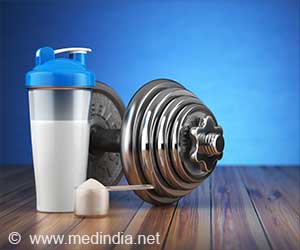Learn how to recognize heat exhaustion symptoms and get expert tips for staying cool and healthy during summer workouts.
- Stay hydrated and avoid overexertion in extreme heat
- Exercise during cooler times of the day to reduce risks
- Prioritize proper nutrition and rest to maintain fitness safely
Exercise-Related Heat Exhaustion
Go to source). In the gym, the risks are also high. Intense workouts, especially heavy weightlifting, can cause not just dehydration, but also strain on the heart. Overexertion can trigger muscle damage and long-term health issues, making it vital to follow the right approach to fitness, particularly in the summer.
Exercising during hot weather can quickly turn dangerous if proper precautions aren't taken. Heat exhaustion is a serious condition caused by an elevated body temperature, which often happens when you push your body too hard in hot conditions. Our bodies normally regulate temperature to around 98.6°F (37°C), but when exercising in the heat, your temperature can rise above normal levels, disrupting essential bodily functions (2✔ ✔Trusted Source
How to Be Active Safely in Warm Weather
Go to source).
During intense exercise in hot and humid conditions, we can sweat up to 3 liters, which is almost all of the water in the bloodstream. #medindia #exercise #hotweather’
Symptoms of Heat Exhaustion
The most common symptom of heat exhaustion is an elevated body temperature, between 101°F (38.3°C) and 104°F (40°C). However, several other signs can indicate that you're at risk of this condition. These include:- Rapid heartbeat and increased breathing rate
- Heavy sweating and dizziness
- Fainting and nausea
- Headaches and muscle cramps
- Fatigue and mild confusion
- Low blood pressure and dehydration
- Difficulty coordinating movements
Rising Fitness Trends and Gym Crowds
Mrinali Dwivedi, Consultant Nutritionist and Clinical Dietitian at Apex Group of Hospitals, Mumbai, emphasizes the importance of caution while exercising during extreme heat. According to her, fitness trends are growing, and gyms are packed year-round, but intense cardio and weight training during hot weather can be risky if not done properly.She warns against excessive use of protein supplements, which can burden the liver and kidneys, especially when consumed in large quantities. Aiming for rapid weight loss through over-exercising can lead to muscle strain and even injury. Mrinali advises individuals to listen to their bodies and avoid pushing themselves beyond their limits.
“Stay cool while working out in the summer, and make sure you’re taking the time to rest and recover,” says Mrinali. “Proper nutrition and hydration before and after exercise are key to maintaining good health.”
Essential Tips for Safe Summer Workouts
To protect yourself while exercising in hot weather, consider the following:- Start early: Aim to exercise in the cooler morning hours before the heat peaks.
- Stay hydrated: Drink plenty of water throughout the day, especially before, during, and after exercise.
- Dress appropriately: Wear lightweight, breathable clothing that helps your body stay cool.
- Avoid midday workouts: The heat is most intense between 12 PM and 4 PM, so it’s best to skip intense workouts during this time.
- Listen to your body: Be attentive to signs of heat-related illnesses, such as dizziness, nausea, or excessive fatigue. If you experience these symptoms, stop exercising.
- Modify your workouts: Consider adjusting your exercise routine by incorporating low-impact activities like swimming or cycling, which are less strenuous in hot weather.
- Take regular breaks: Schedule rest periods during your workouts, especially in hot conditions. Taking regular breaks helps prevent overheating.
Pre-Workout Nutrition
Before heading out for a workout, make sure you’re fueling your body properly. Opt for foods like bananas, dry fruits, oats, and protein-rich options to give your muscles the energy they need. And don’t forget to hydrate! Electrolyte-rich drinks are an excellent choice to maintain your electrolyte balance. Never exercise on an empty stomach, as this can leave you feeling weak and dizzy.Exercising in the heat can be effective, but it’s important to stay hydrated, avoid overdoing it, and listen to your body. Wearing the right clothes, and following safe training practices, you can keep your workouts productive without putting your health at risk. With the right balance of rest, nutrition, and smart training, you can stay safe while reaching your fitness goals this summer.
References:
- Exercise-Related Heat Exhaustion - (https://www.hopkinsmedicine.org/health/conditions-and-diseases/exerciserelated-heat-exhaustion)
- How to Be Active Safely in Warm Weather - (https://www.heart.org/en/healthy-living/fitness/getting-active/how-to-stay-active-in-warm-weather)
Source-Medindia
















